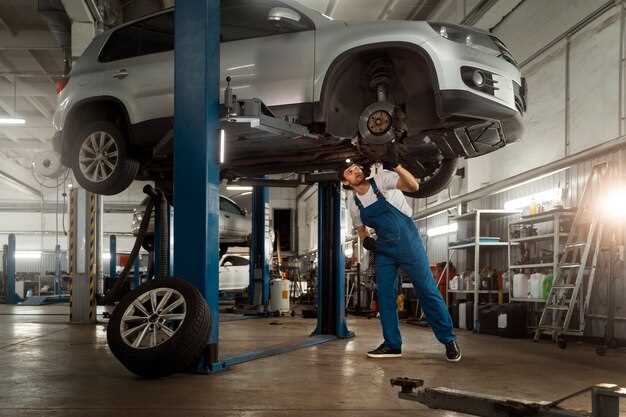
For BMW enthusiasts, the pursuit of perfection often leads to one critical area of focus: the suspension system. Proper suspension modifications not only elevate your vehicle’s aesthetics but also significantly enhance its handling characteristics. Among the various upgrades available, the implementation of coilovers stands out as a popular choice for those seeking a more controlled and responsive driving experience.
Coilovers offer a unique advantage as they combine both the coil spring and shock absorber into a single unit, allowing for precise adjustments in ride height and dampening. This level of customization enables drivers to tailor their BMW to meet specific handling demands, whether for track days or everyday driving. By fine-tuning suspension settings, enthusiasts can improve cornering stability, reduce body roll, and achieve a more planted feel on the road.
Moreover, investing in quality suspension components such as coilovers can lead to improved tire contact with the road surface, optimizing grip and enhancing the overall performance of your BMW. With the right modifications, you can transform your driving experience, achieving not only a high level of comfort but also the thrilling dynamics that BMW vehicles are known for. The journey to enhanced handling begins with understanding your options and selecting the ideal suspension setup for your specific needs.
Choosing the Right Coilovers for Your BMW Model
Selecting the ideal coilovers for your BMW is crucial to enhancing its handling and performance. Coilovers are one of the most effective suspension modifications, allowing for improved tuning capabilities and ride quality. Here’s what to consider when choosing coilovers for your specific BMW model:
- Compatibility:
Ensure that the coilovers you select are specifically designed for your BMW model. Different models have varying weight distributions, dimensions, and handling characteristics, making it essential to get model-specific coilovers for optimal performance.
- Adjustability:
Look for coilovers that offer adjustable ride height and damping settings. This allows you to tailor the suspension to your driving style and preferences, whether you’re focusing on daily comfort or track performance.
- Spring Rates:
Consider the spring rates provided by the coilovers. Stiffer springs can enhance handling but may compromise ride comfort. A balance of spring rates is vital to ensure you maintain good control without sacrificing too much comfort.
- Build Quality:
Invest in high-quality coilovers made from durable materials. Look for features like corrosion resistance and adjustable top mounts to ensure longevity and reliable performance during tuning.
- Brand Reputation:
Opt for reputable brands that specialize in BMW suspension tuning. Brands with a history in the aftermarket community often provide better support, warranty, and proven performance.
- User Reviews:
Research user experiences and reviews on specific coilovers. Feedback from other BMW owners can provide insights into the real-world performance and compatibility of various models.
Taking the time to consider these factors will help you select the right coilovers for your BMW, enhancing your vehicle’s suspension and improving overall driving dynamics. Properly tuned coilovers can transform your driving experience, offering both comfort and performance tailored to your needs.
Step-by-Step Guide to Suspension Tuning for Optimal Performance

Suspension tuning is essential for optimizing the handling characteristics of your BMW. This guide outlines a systematic approach to achieving the best performance through coilovers and suspension modifications.
Step 1: Assess Your Current Setup
Begin by evaluating your existing suspension system. Look for signs of wear or damage that may affect performance. Take note of the factory settings and characteristics of your suspension, including ride height and damper settings.
Step 2: Set Performance Goals
Determine what you want to achieve with your suspension tuning. Goals may include improved cornering stability, better ride quality, or enhanced responsiveness. Clarifying your objectives will guide your modifications.
Step 3: Select the Right Coilovers
Invest in a quality set of coilovers suitable for your driving style and BMW model. Research options that offer adjustable ride height and damping characteristics, allowing for customization based on your performance goals.
Step 4: Install Coilovers
Carefully follow the manufacturer’s installation instructions for your coilovers. Ensure all components are securely fitted, and double-check the alignment of your suspension. Proper installation is crucial for safety and performance.
Step 5: Adjust Ride Height
Set the ride height according to your preferences and handling objectives. Lowering the center of gravity improves stability but may impact ride quality. Make fine adjustments based on testing and feedback from driving experience.
Step 6: Tune Damping Settings
Adjust the damping settings on your coilovers to optimize ride comfort and handling response. Start with the manufacturer’s recommended baseline settings and gradually tweak them to suit your driving style and road conditions.
Step 7: Conduct Test Drives
After making adjustments, undertake test drives in various conditions. Assess how changes affect your BMW’s handling. Pay attention to feedback from the steering, body roll, and overall stability in corners.
Step 8: Make Final Adjustments
Based on your test drive insights, make any necessary final adjustments to both ride height and damping. This iterative process is crucial for achieving balanced performance tailored to your driving preferences.
Step 9: Regular Maintenance
Once your suspension is tuned, regular maintenance is vital to ensure continued performance. Inspect components for wear and keep the system clean and well-lubricated. Periodically re-evaluate your settings as your driving style or goals evolve.
By following these steps, you can enhance your BMW’s handling through effective suspension tuning, leveraging the benefits of quality coilovers and thoughtful adjustments.
Common Mistakes to Avoid When Upgrading BMW Suspension

Upgrading your BMW’s suspension is a critical step in enhancing handling and ride comfort. However, several common mistakes can hinder performance and lead to undesired outcomes. Avoiding these pitfalls will ensure a successful upgrade.
1. Poor Research
Before committing to any suspension modifications, it’s vital to conduct thorough research. Not all coilovers are created equal, and selecting the wrong set can negatively impact your vehicle’s performance. Understand the specific needs of your BMW model and choose components that match your driving style and goals.
2. Ignoring Alignment
After upgrading the suspension, especially with coilovers, neglecting to perform a proper wheel alignment is a common oversight. Misalignment can lead to uneven tire wear and compromised handling. Always schedule an alignment after any suspension changes to ensure optimal performance.
3. Skipping Professional Installation
While DIY installation may seem cost-effective, improper setup can result in subpar performance or even damage. If you’re not experienced with suspension work, consider hiring a professional. Their expertise will help you get the most out of your new components.
4. Not Considering Ride Height
Coilovers allow for adjustable ride height, which can affect both handling and comfort. However, overly lowering your BMW can lead to bottoming out and negatively impact suspension travel. Carefully evaluate how low you want to go and maintain an appropriate balance between aesthetics and performance.
5. Overlooking Spring Rates
Choosing the wrong spring rates can drastically alter your BMW’s handling characteristics. Stiffer springs may improve responsiveness but can also compromise ride quality. Always aim for a spring rate that complements your driving preferences and type of use, whether it’s daily driving or track performance.
6. Failing to Upgrade Other Components
A suspension upgrade often necessitates attention to related components. Upgrading to coilovers may require new sway bars, strut mounts, or even bushings to ensure everything works harmoniously. Neglecting these parts can lead to performance issues and exacerbate wear on the new suspension.
7. Not Testing Different Settings
Coilovers often come with adjustable settings for compression and rebound. Failing to experiment with these adjustments can prevent you from achieving the best setup for your driving style. Take the time to test different settings on various terrains for an optimized driving experience.
By avoiding these common mistakes, you can ensure that your BMW suspension upgrade enhances handling, comfort, and overall performance, unlocking the full potential of your vehicle.
